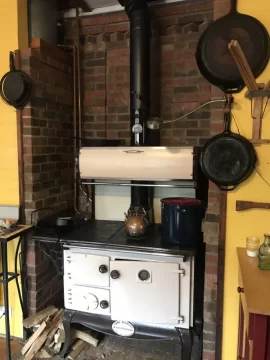- Nov 30, 2012
- 20
I have heated and cooked with a 1993 Waterford Wood Stanley Cookstove for 16 years. It is time to disassemble it and remortar it, as it is getting harder to control the air to the firebox.
I haven't found any how-to's or any good blow up diagrams. Specifically, there are flat topped flush mounted quarter size circular caps on the corners of the top that must conceal bolt heads. I presume they are step one and I can't get them to come off...
Please let me know if you have any information.
thanks
Ray
I haven't found any how-to's or any good blow up diagrams. Specifically, there are flat topped flush mounted quarter size circular caps on the corners of the top that must conceal bolt heads. I presume they are step one and I can't get them to come off...
Please let me know if you have any information.
thanks
Ray


![IMG_2311[1].JPG](/talk/data/attachments/253/253855-68b3e77055a6967543aca906ebd5c154.jpg)
![IMG_2316[1].JPG](/talk/data/attachments/253/253861-7cc59e14c5beb4cd1640171f9f8a339d.jpg)
![IMG_2325[1].JPG](/talk/data/attachments/253/253865-08d837c929ed77a8b7f4a23fd8d33b56.jpg)
![IMG_2326[1].JPG](/talk/data/attachments/253/253868-abfecb14738f21d9deded196ab06b743.jpg)
![IMG_2331[1].JPG](/talk/data/attachments/253/253869-d70f8a0b8253f1fe000d627d549d5f74.jpg)
